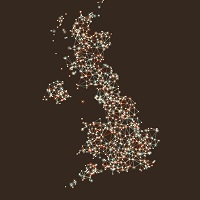Researchers from the Durham Energy Institute (DEI), at Durham University, UK, have been working on a new project to map out waste heat produced by heavy industry which could potentially be used to heat domestic homes.
Nationally, the total amount of waste heat produced by large industries is 35% more than the heat needed to warm our homes, so the new research has mapped out just how much of this heat there is and where it is in the UK.
The study by a team of engineering students, led by Professor Jon Gluylas, DEI Executive Director, focussed on large industries such as factories and power stations, and measured their natural gas consumption to determine the amount of waste heat they produced.
This data was then mapped according to Local Authority Areas and population density to determine if the available waste heat levels were sufficient to be reused in domestic heating.

The amount of heat available depends upon different factors, for example the effect of the Coronavirus pandemic is likely to result in less activity by large industries, so less gas will be used to produce heat. This will lead to a fall in industrial waste heat production.
Additionally, certain regions, such as Yorkshire and The Humber and the East of England have high capacity power stations so they will produce a higher amount of wasted heat. These are also areas with high population densities so there is great potential for waste heat reuse.
But, the study also found that some larger industries with the greatest available waste heat are amongst the least environmentally friendly as they are all highly dependent on natural gas. Many appear to be reluctant to be part of waste reuse schemes so financial incentives may be required to encourage uptake.
The researchers concluded that, although the use of waste heat reuse schemes by large industry should be increased, it may not be sustainable and environmentally greener in the long-term due to the fact these industries mainly use energy produced by fossil fuels to generate their heat.